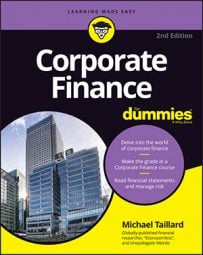A number of things influence exchange rates, but in the end, how are exchange rates decided when a floating currency is involved? The process actually works a lot like buying stock. The organizations that have foreign currency and are willing to sell it for domestic currency (or another foreign currency) tell people how much of the domestic currency they want to receive for their foreign currency.
This is called the ask price. For example, the organizations may ask for 1.5 of the domestic currency for every 1 of their foreign currency.
When people want to buy that foreign currency, the amount they’re willing to pay for it is called the bid price. For example, a person may bid 1.3 of the domestic currency for every 1 of the foreign currency.
The difference between the ask price and the bid price is called the spread, and no exchange can take place until either the buyer or seller (sometimes both) compromises on the final transaction price.
The price that’s agreed upon in this type of transaction is called the spot rate because it’s the exchange rate that has occurred right there on the spot. The majority of all foreign exchanges that individuals participate in are spot exchanges.
For example, in all major international airports, you can exchange money in foreign exchange booths, where you get the spot rate of exchange. Because individual people don’t exchange enough to influence the exchange rate, you’re pretty much at the mercy of whatever price the booth is asking for the currency you want.
Even though the airport exchange broker rips you off after charging brokerage rates plus the exchange spread, as an individual, you’re really not dealing with a ton of money. So you’re not risking much of a loss even if the exchange rate of the currency you bought drops suddenly, making your purchase worth much less than when you paid for it.
International companies and institutional investors, on the other hand, have quite a bit to be worried about. When these organizations exchange currency, they often do so in very large quantities.
Either to mitigate risk or (too often) to generate more income by speculating on the exchange, professionals rely on other types of exchanges than the spot transaction. Here’s a quick look at a few of them:
Future and forward transactions: These exchanges are contracted to take place in the future at a price agreed upon immediately, giving a guaranteed transaction rate regardless of what happens to the market rate between the contract signing and the delivery date.
The difference between forward transactions and future transactions (sometimes called futures) is primarily that futures are standardized contracts that are traded kind of like stock, while forward transactions are individually customized between the parties of the transaction.
Currency swaps: These exchanges occur when two organizations agree to exchange currency with each other and then exchange back at a later date, typically at the same rate. This allows each organization to have some foreign currency on hand for temporary use without foreign exchange risk. When available, swaps are extremely effective at mitigating risk.
Options contracts: Some companies prefer to purchase options contracts, which give a company the option to either buy or sell a currency at a specific rate but doesn’t obligate them to do so.

